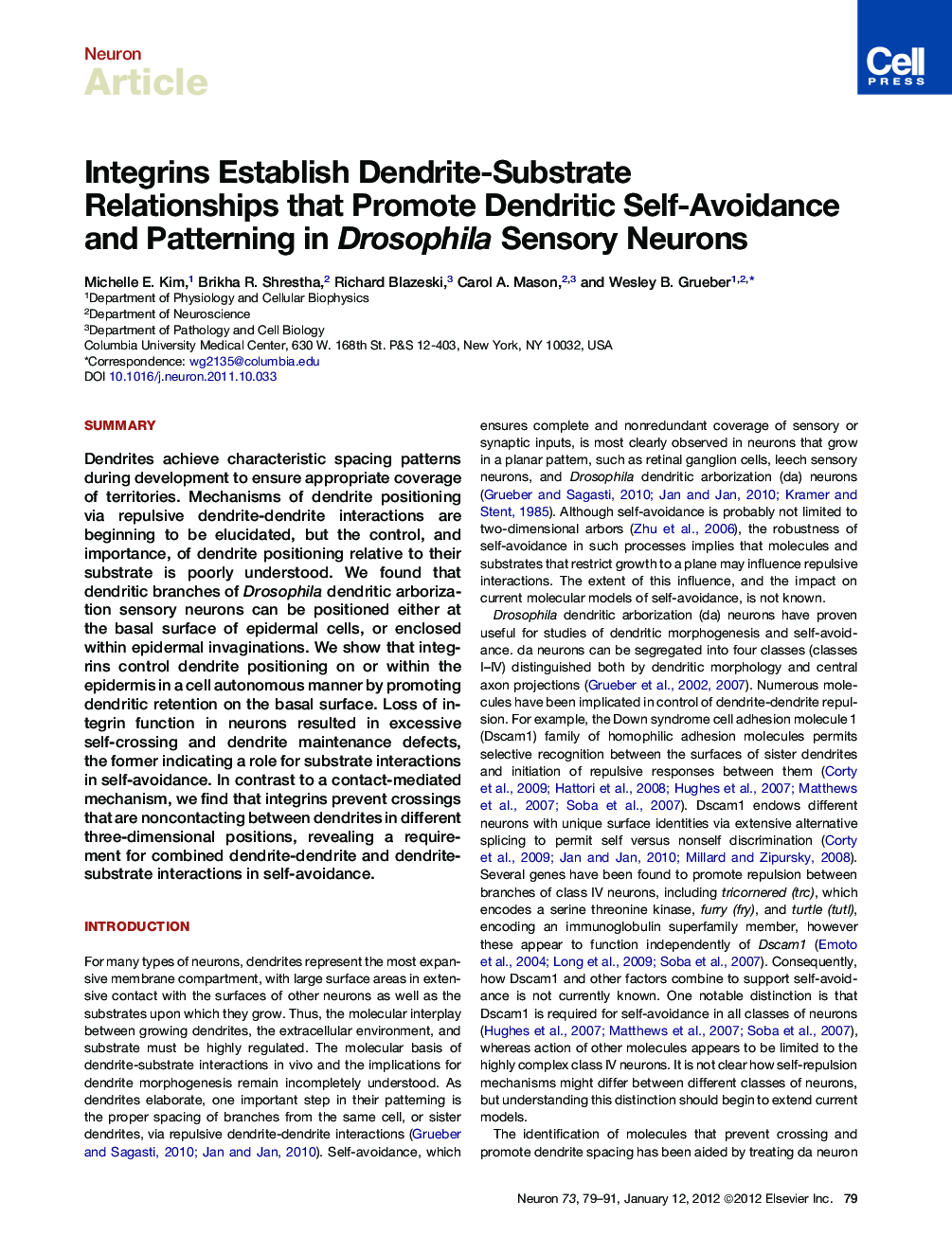| Article ID | Journal | Published Year | Pages | File Type |
|---|---|---|---|---|
| 4321513 | Neuron | 2012 | 13 Pages |
SummaryDendrites achieve characteristic spacing patterns during development to ensure appropriate coverage of territories. Mechanisms of dendrite positioning via repulsive dendrite-dendrite interactions are beginning to be elucidated, but the control, and importance, of dendrite positioning relative to their substrate is poorly understood. We found that dendritic branches of Drosophila dendritic arborization sensory neurons can be positioned either at the basal surface of epidermal cells, or enclosed within epidermal invaginations. We show that integrins control dendrite positioning on or within the epidermis in a cell autonomous manner by promoting dendritic retention on the basal surface. Loss of integrin function in neurons resulted in excessive self-crossing and dendrite maintenance defects, the former indicating a role for substrate interactions in self-avoidance. In contrast to a contact-mediated mechanism, we find that integrins prevent crossings that are noncontacting between dendrites in different three-dimensional positions, revealing a requirement for combined dendrite-dendrite and dendrite-substrate interactions in self-avoidance.
► Integrins cell autonomously promote dendrite elaboration and self-avoidance ► Integrins prevent ingression of sensory dendrites into epidermal cells ► Ingression leads to excessive noncontacting crossing between dendrites ► Dendrite-substrate interactions support contact mediated cues during self-avoidance
